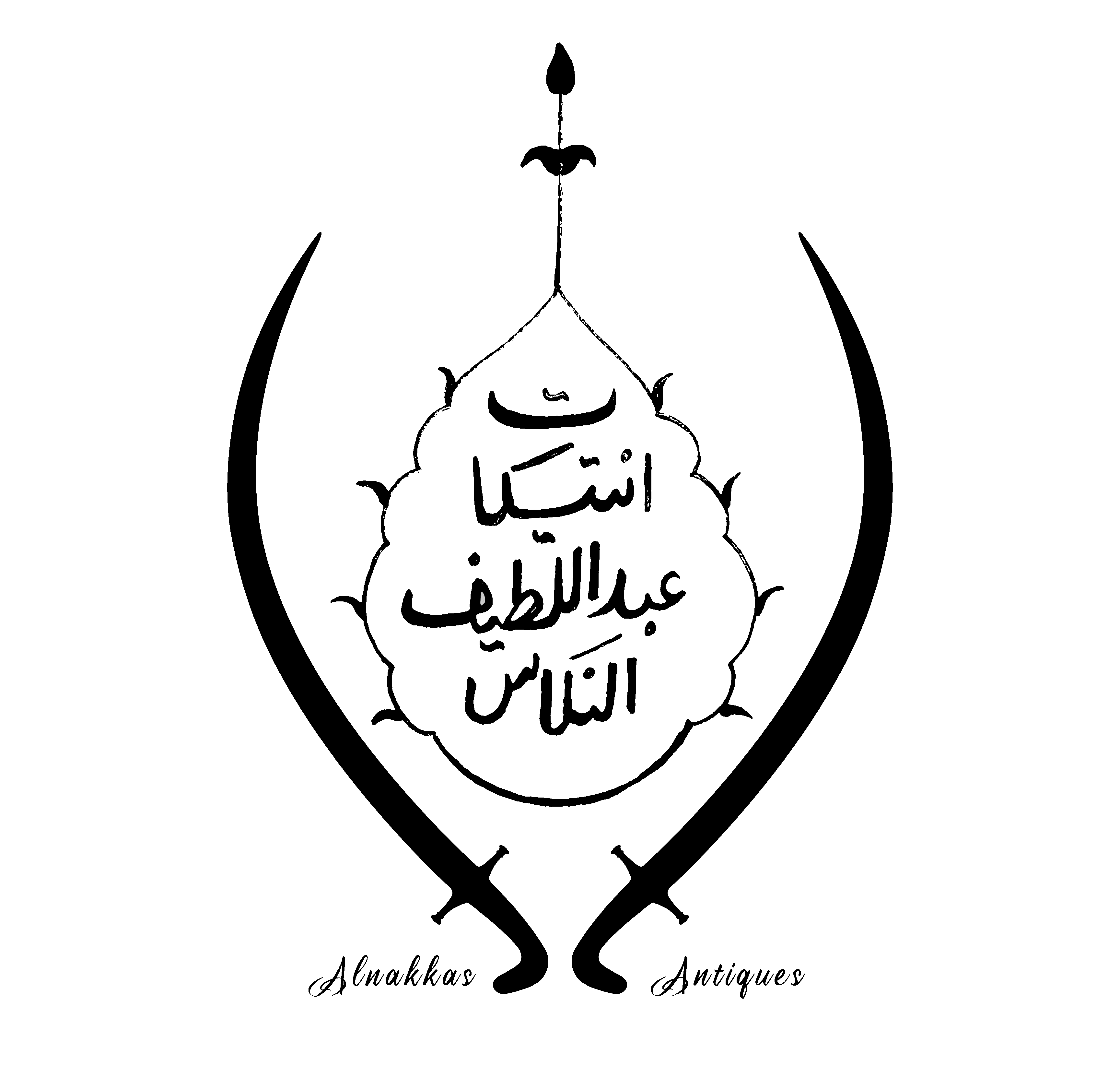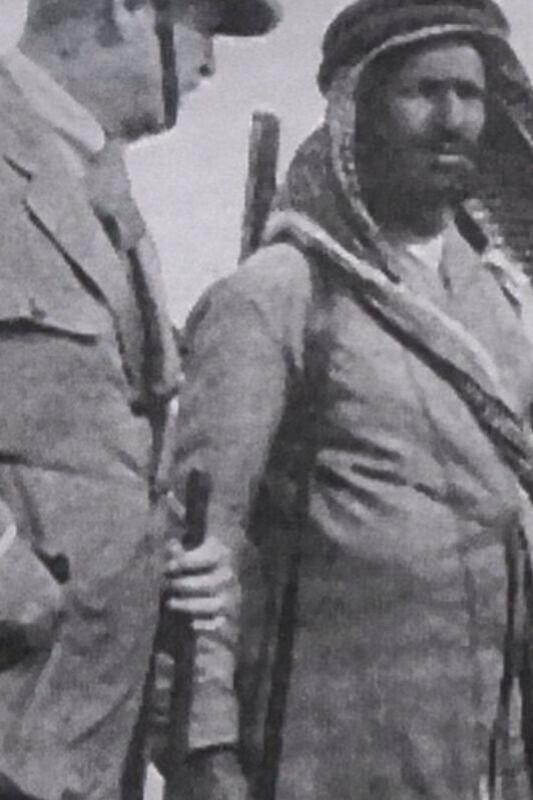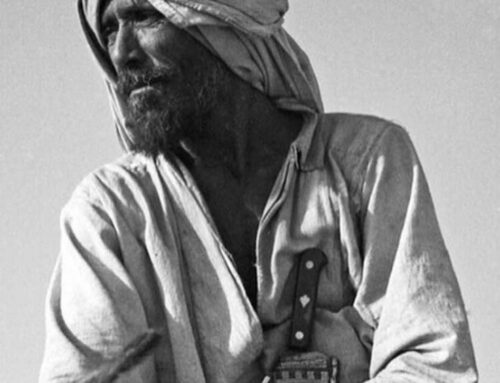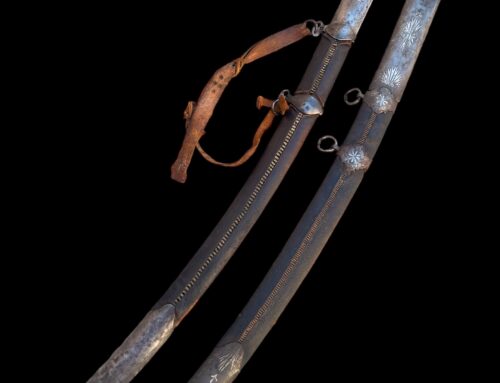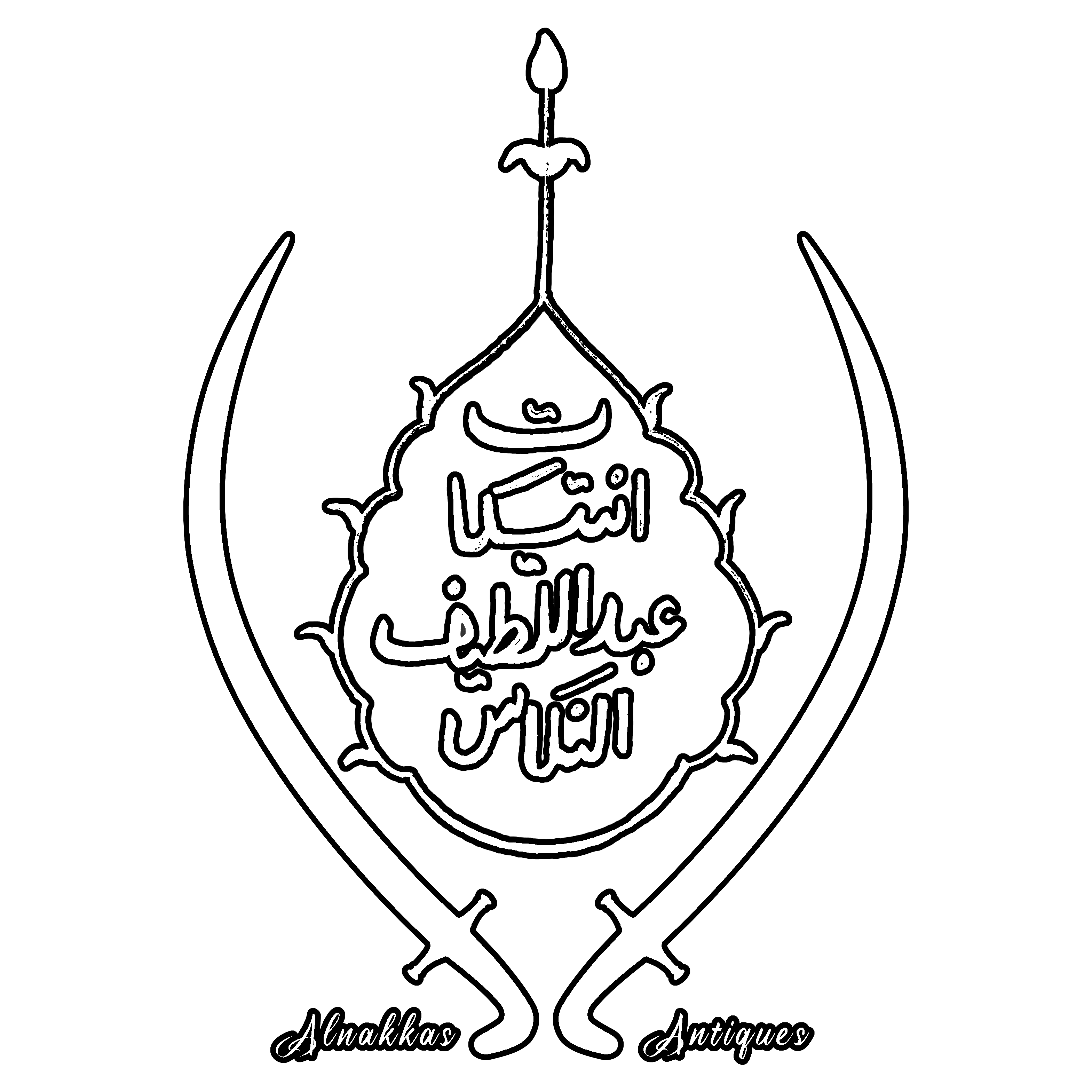Those interested in the field of Arab arms and armor are immediately met with the challenge of limited sources that focuses on field. Often, Arab arms are miscategorized as Turkish or Persian, likely because of the interconnected history of the region which while understandable, it makes difficult the accurate identification of an independent field of art and its production. Though extremely difficult to pinpoint the production and origin of various Arab arms, there is hope in studying the field through the heirlooms that many Arab families keep.
I was fortunate to be contacted by a member of AlNemran family in Kuwait, who thankfully brought to me two swords for both documentation and restoration. The images attached are of the swords after restoration. Prior to their restoration, the swords were locked in storage along with dallahs, guns of various types and other coffee tools. The items were locked since the passing of Saud al Nemran in 1963 (1) only to be opened 3 years ago in 2021. I am thankful of their trust for me to document the items and clean them. The blades suffered minimal rusting and only gentle cleaning was sufficient to keep them in a safe state. The mounts, patinated and covered in dust were only cleaned and waxed.
Each sword comes with a different style of construction and decoration. The first example comes with a handle made of horn pinned with silver pins, silver wire and a sheet of silver over the horn slabs decorated in geometric patterns. The handle is pinned in 4 locations with some maintaining flower design washers. The hilt remains strongly fit to this day. The quillons are brass with a silver sheet decoration and a brass pommel with geometric design. The scabbard is wood with fittings made of brass. The leather is worn out but remains relatively intact. It is likely to have been made in the Levant, as the brass decoration shares many features that are found in khanjars and shibriyas commonly found and made there. The blade is Persian, signed work of Moheb Ali Asfahani comes with a tight watered pattern remains in excellent condition, still maintaining its sharp edge.
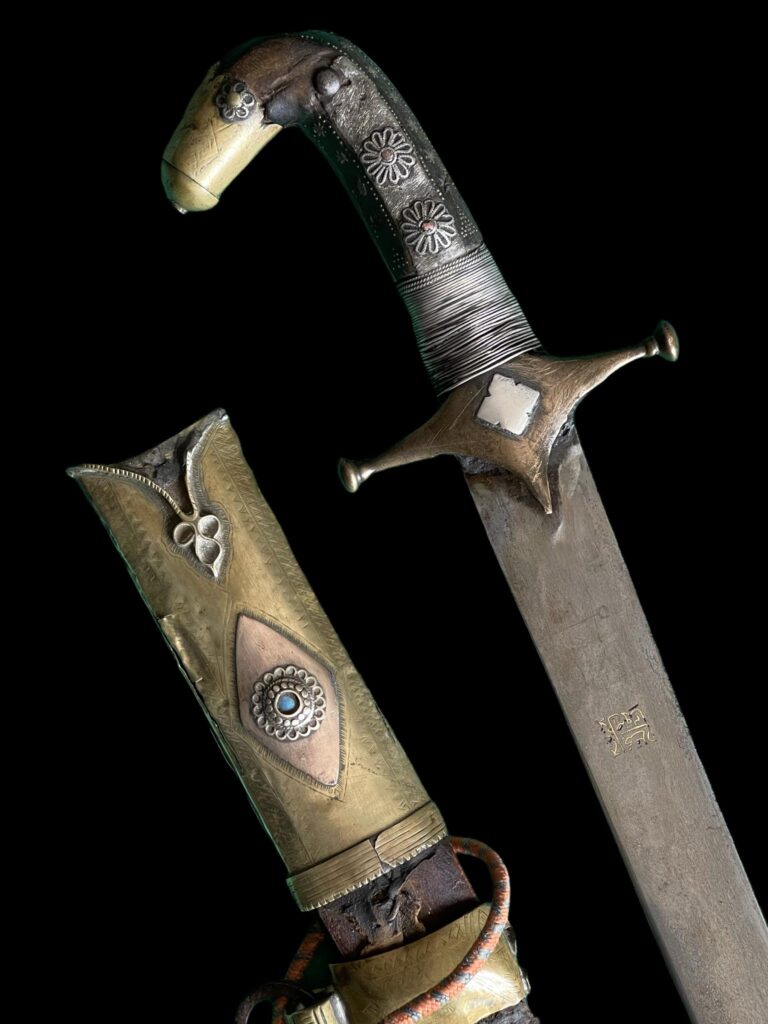
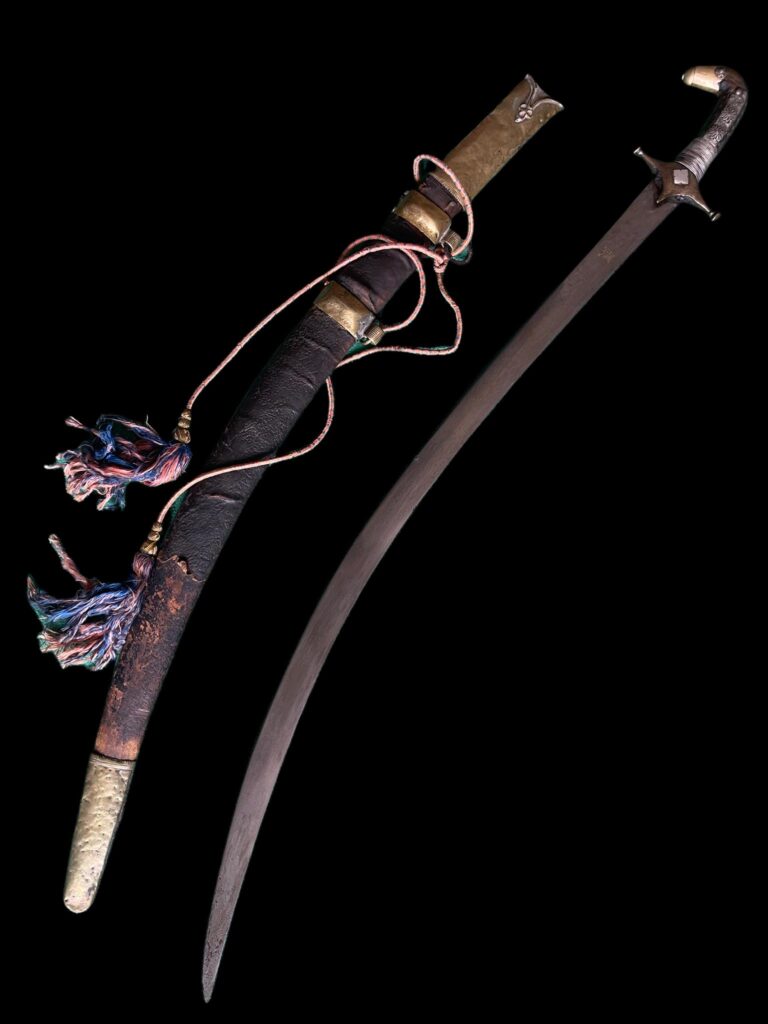
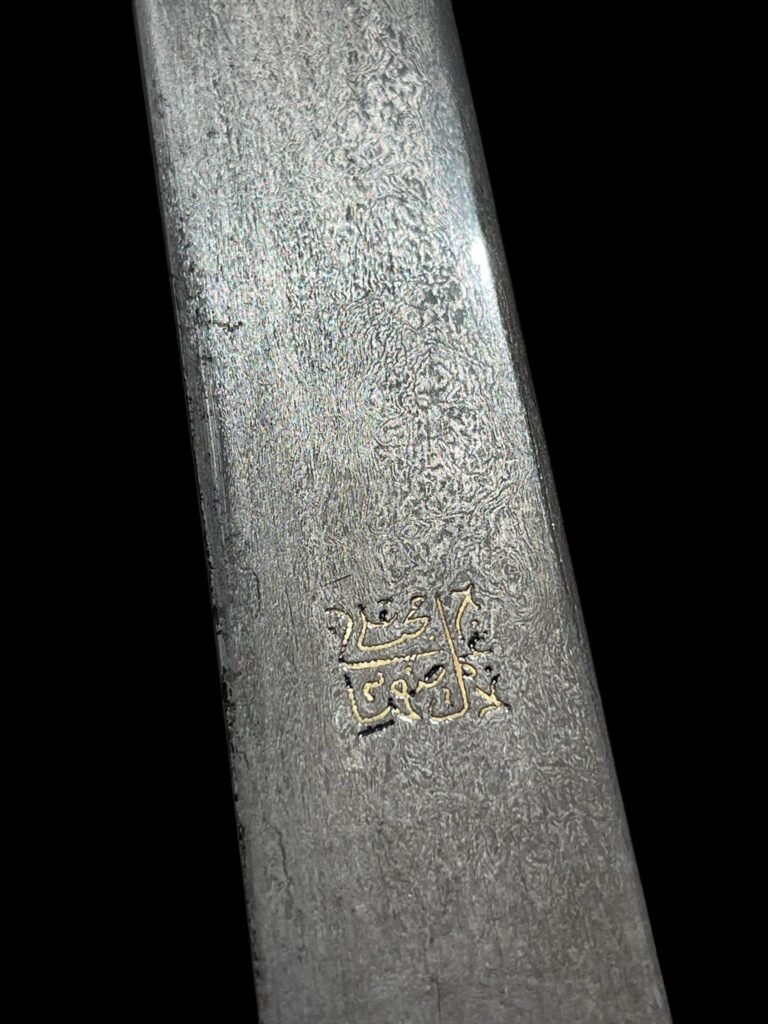
– The second sword tells an all too familiar Arab story of trade and intertwined relations. The mounts on a first glance show that they are classic Iraqi silverwork with extensive floral pattern. Iraqi work often employs floral patterns along with boat scenes based on the Euphrates and Tigris rivers and the life around them. Image of the dove and fish are often present on Iraqi silverwork as well and are present on this example. Though on a closer look, it shows that this sword likely was repaired by a Sharqiya workshop, with repairs done to the lower part of the chape, shortening of the middle of the scabbard and the handle. This was likely done in Saud alNemran’s diplomatic missions to both Saudi and Bahrain (2). The blade is likely watered, though beneath the superficial rust that was cleaned, remains the original polish which was maintained as is.
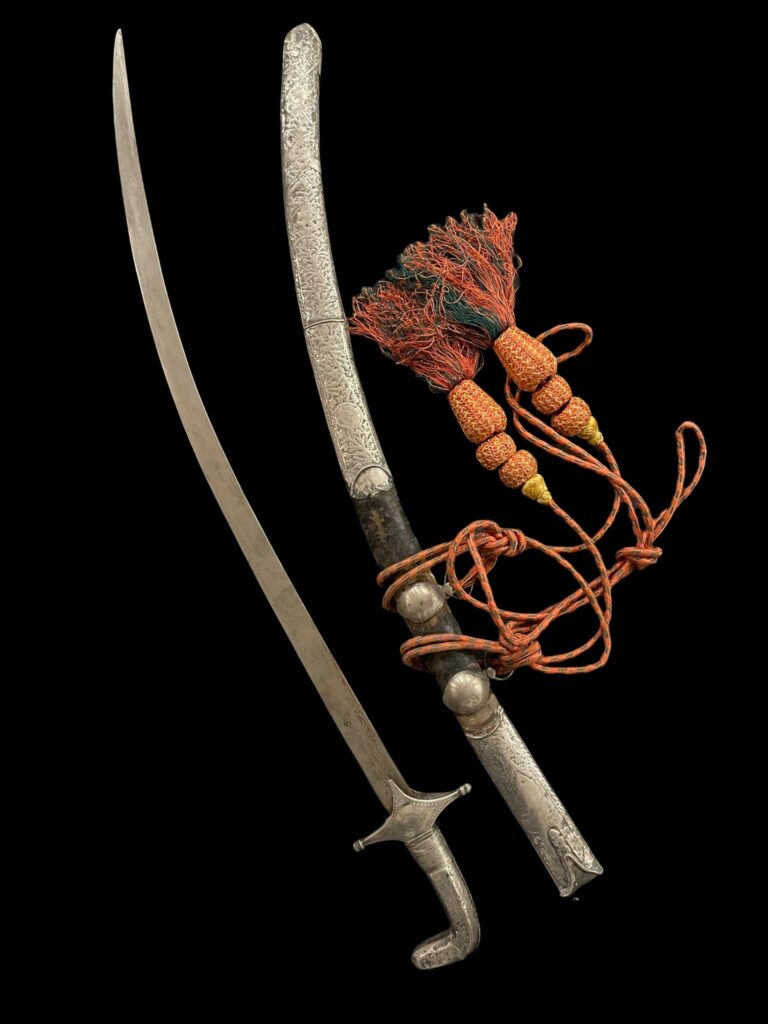
Saud alNemran is a prominent member of Kuwait’s Rashaida tribe (3). One of the most notable points of alNemran’s life was his participation in the controversial 1938 First Legislative Council events during the reign of Sheikh Ahmad al Jaber where al Rashaida tribe was summoned to quell the political unrest surrounding the establishment of the council. (4)

Reference:
(1) (2) (3) AlOwayed, A. (2013, December 31). Retrieved February 15, 2024, from AlRai Article
(4) AlEbrahim, A. (2021, February 4). The Balancing Powers in Kuwait in the 1938 Majlis Movement. AlMuntaqa, 18. https://almuntaqa.dohainstitute.org/en/issue009/Documents/almuntaqa-09-2021-alebrahim.pdf
